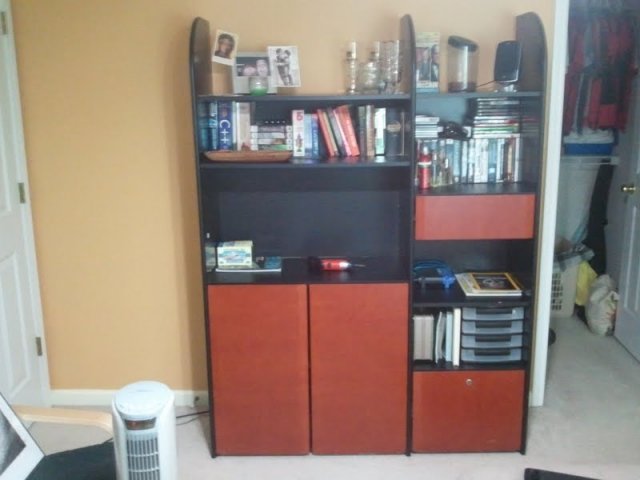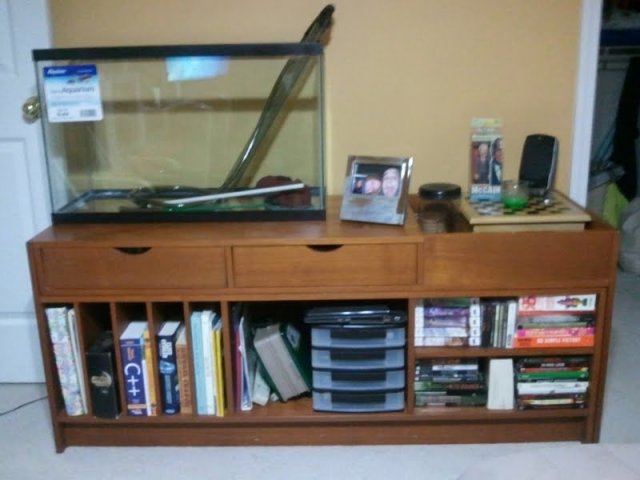In the U.S.A. Hygro Polysperma is illegal to buy, sell, trade, etc. So I would remove that plant from your list.
Planted tank without filtration?
- Thread starter aXio
- Start date
You are using an out of date browser. It may not display this or other websites correctly.
You should upgrade or use an alternative browser.
You should upgrade or use an alternative browser.
Yes you can - google Leiden Aquarium (for the Dutch city Leyden) and who'll get a lot of hits on how to set-up and maintain one. But remember in this type of aquarium the plants are first and fish (what few there are) are secondary
there was an article in a fish magazine a few moths ago about that.
In the U.S.A. Hygro Polysperma is illegal to buy, sell, trade, etc. So I would remove that plant from your list.
there was an article in a fish magazine a few moths ago about that.
Might you remember what it was called?
I had a similar setup. 55g with 30-45 Platy, ton of plants. There was a 20g filter that I never cleaned or did anything with. I could go a month w/o changing the water, probably longer, but I didn't push it. Eventually, the filter was more for moving water and mixing in air.
If I were doing this, I'd go ahead and order a plant package from an online retailer or post a WTB lot on here (unless you don't like snails, relatively few people have snail free tanks on here)
It sounds like what you want to do is create sort of a biotopic plant selection. Peter Hiscock's book, Encylclopedia of Aquarium Plants, is a little outdated (you'll find plants like H. polysperma) but still great for this.
Unless, of course, you are lucky and your LFS have awesome plants. But mine mostly have an assortment of junk, and I've bought little bits of this and that from them and from people on here, so all I have really are just a hodgepodge of plants under relatively low light. The setups I'm happiest with are my Crypt wendtii 5 gallon hex and my 10 gallon Java fern and Java moss The 29 gallon is a jungle of mixed plants and rather unruly.
The 29 gallon is a jungle of mixed plants and rather unruly.
If you are doing a high (or mid) light setup, another advantage to getting a group of plants all at the same time - besides the instant WOW factor - is that it will cut down on algae. A lot of new setups have algae troubles due to not having enough plants from the onset, such as this: http://www.aquariacentral.com/forums/showthread.php?t=233454
- is that it will cut down on algae. A lot of new setups have algae troubles due to not having enough plants from the onset, such as this: http://www.aquariacentral.com/forums/showthread.php?t=233454
Great tank with great potential, but needs more plants for the amount of light.
It sounds like what you want to do is create sort of a biotopic plant selection. Peter Hiscock's book, Encylclopedia of Aquarium Plants, is a little outdated (you'll find plants like H. polysperma) but still great for this.
Unless, of course, you are lucky and your LFS have awesome plants. But mine mostly have an assortment of junk, and I've bought little bits of this and that from them and from people on here, so all I have really are just a hodgepodge of plants under relatively low light. The setups I'm happiest with are my Crypt wendtii 5 gallon hex and my 10 gallon Java fern and Java moss
If you are doing a high (or mid) light setup, another advantage to getting a group of plants all at the same time - besides the instant WOW factor
Great tank with great potential, but needs more plants for the amount of light.
I had a similar setup. 55g with 30-45 Platy, ton of plants. There was a 20g filter that I never cleaned or did anything with. I could go a month w/o changing the water, probably longer, but I didn't push it. Eventually, the filter was more for moving water and mixing in air.
Good to hear people have done this with success!
If I were doing this, I'd go ahead and order a plant package from an online retailer or post a WTB lot on here (unless you don't like snails, relatively few people have snail free tanks on here)
It sounds like what you want to do is create sort of a biotopic plant selection. Peter Hiscock's book, Encylclopedia of Aquarium Plants, is a little outdated (you'll find plants like H. polysperma) but still great for this.
Unless, of course, you are lucky and your LFS have awesome plants. But mine mostly have an assortment of junk, and I've bought little bits of this and that from them and from people on here, so all I have really are just a hodgepodge of plants under relatively low light. The setups I'm happiest with are my Crypt wendtii 5 gallon hex and my 10 gallon Java fern and Java mossThe 29 gallon is a jungle of mixed plants and rather unruly.
If you are doing a high (or mid) light setup, another advantage to getting a group of plants all at the same time - besides the instant WOW factor- is that it will cut down on algae. A lot of new setups have algae troubles due to not having enough plants from the onset, such as this: http://www.aquariacentral.com/forums/showthread.php?t=233454
Great tank with great potential, but needs more plants for the amount of light.
Yeah I'm probably going to end up going with a low-tech plant package of some sort of the net. Although I have a amazing LFS, I just don't think they will have enough of a variety of low-tech for me to plant as heavily as I want at the start. Right now I'm in the process of redoing my room to so that I can make room for one of the new tanks!
Last edited:
Ok first stage of the new tank done! I had to change out some furniture so that I could fit the new tank in my room. Been cleaning up and rearranging half the day. Here are my before and after shots. I'm going to have to put some sort of poster or picture about the tank, because the last piece of furniture I had as you can tell was much taller. So now it looks sort of empty... but anyone way, here is how it looks so far!






